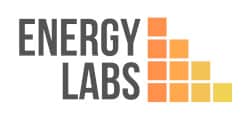Heat recovery or energy recovery ventilation (ERV) is a great way for the Australian homeowner to improve the efficiency of their home. It works by capturing the warm air from inside your house and using it to pre-warm incoming fresh air. This helps reduce the amount of energy required to heat your home, saving you money in the long run.
So, how does heat recovery work? It uses a series of ducts and fans to capture and exchange air between two separate areas or zones. In the case of an Australian home, one zone would be inside and one outside. Warm air from within your home is drawn from one side of the system into the other, where it is used to pre-warm incoming fresh air before it enters your living space.
There are several types of heat recovery systems that can be installed in a house, depending on your needs. The most common type is passive heat recovery ventilation (PHRV), which uses natural convection to transfer heat from one area to another. This system relies on airflow generated by temperature differences between rooms, so there’s no need for fans or ducts.
The second type is active heat recovery ventilation (AHRV), which uses powered fans and ducts to move air through the system more quickly and efficiently than PHRV systems. AHRV systems are generally more effective at recovering heat and can be adjusted to suit different levels of activity in a household – such as when there are more people in the house or when certain rooms require more ventilation than others.
When deciding whether or not you should install a heat recovery system in your home, it’s important to consider how much energy you want to save over time as well as how much money you’re willing to invest upfront for installation costs. Heat recovery systems can be expensive but their savings will pay for themselves over time if used correctly.
Another factor that should be taken into account is whether or not you have an existing HVAC (heating, ventilating, and air conditioning) system already installed in your home – if so, then installing a new ERV may not be necessary or cost effective. However, if you don’t have an existing HVAC system then installing an ERV can provide significant energy savings over time as well as improve indoor air quality by providing continuous fresh air circulation throughout your house.
Finally, keep in mind that good insulation plays an important role in reducing energy costs – so make sure that all doors and windows are properly sealed with weatherstripping before installing a heat recovery system!
Heat recovery technology has come a long way over the years and can provide significant energy savings for Australian homeowners who invest in them properly – hopefully this beginner’s guide has helped shed some light on this often complicated topic!
